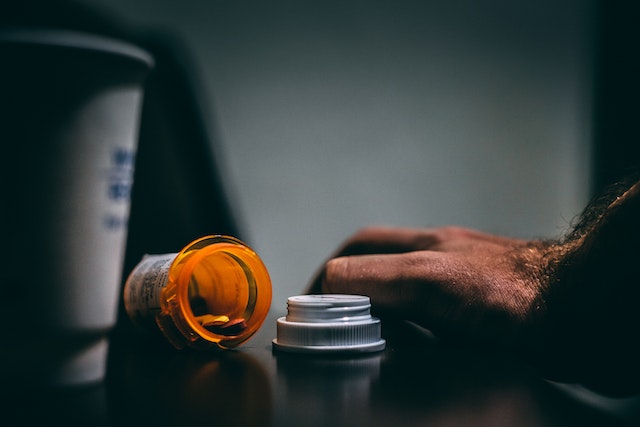
How is an addict’s brain different to a non-addict’s? They have significant changes in the reward, stress, and self-control parts of their brains.
Whether or not someone becomes an addict is based on a number of things, but experiments have shown that up to 50% of that risk is genetic. One of these experiments looked at 861 pairs of identical twins and 653 pairs of non-identical twins. They found that when one identical twin was an addict, the other twin had a very high likelihood of also being an addict. That could be explained by environment, but this wasn’t the same with non-identical twins, which would suggest that genetics plays a large part. 50 to 60% of addiction can be explained by genetics. If you have an addict for a parent, you are 8 times more likely to be an addict. Again, it is difficult to separate the genes from the environment, but evidence has shown that some people are more likely to become addicts.
So, what happens in the brain? Just because someone is genetically predisposed to be an addict, obviously doesn’t always mean that they will. However, when people become addicts, they have certain differences in their brains. All of our brains are wired to associate pleasure with certain actions. This is an evolved response because it makes us do things that are good for us, such as reproduce or find foods that are high in fats and carbohydrates. These are actions that early humans needed to do to stay alive. The brain does this by releasing a neurotransmitter called dopamine into an area of the brain called the nucleus accumbens. This is the part of the brain responsible for pleasure, positive reinforcement, and motivation. The dopamine binds to dopamine receptors and makes people feel good. If you do something that is good for the body, dopamine is released, makes the brain feel good, and the activity is repeated. That doesn’t mean dopamine only makes people feel good. It has a whole host of jobs, but that is one of them.
When people take something that makes them feel good, be it alcohol, cigarettes, a pain killer, or a Big Mac, dopamine is released. This can make us want to do that activity again because it has acted on the part of our brain responsible for pleasure, but for many of us, it never gets past the point that we “like” the action. For an addict, the brain begins to rewire itself. In addicts, the drug causes a huge release of dopamine, sometimes ten times more than usual. The brain remembers this and associates it with the drug. However, each time the addict takes the drug, the dopamine response is reduced and more of the drug is required. The brain is trying to get back to a balanced state, so it tries to reduce the reaction to the drug. This is tolerance and it can lead to people needing more and more of the drug each time. The brain adjusts each time to cope with the new level of dopamine and after a while, the brain cannot cope without that level of dopamine. This is where craving and the problems with withdrawal come from.
Over time, the brain rewires itself so that it needs the drug and the dopamine. It reaches the level of something we have to have, such as food. If you don’t eat, your brain makes you eat. If you don’t have the drug, your brain makes you have the drug. This is why it is so difficult to stop taking a drug and to end an addiction.
Studies have shown that addicts have another difference in their brain to non-addicts. There is some evidence that addicts have an abnormality in the area of their brain responsible for self-control. There are fibers that connect different parts of the brain and send signals. In addicts, the fibers that connect the areas involved with emotion and the areas that tell them to stop doing something were much less efficient. It took much longer for the brain to send a stop signal than in the brain of a non-addict. That could mean that one difference between an addict and a non-addict is that the non-addict is able to tell themselves to stop doing something at the point where the action isn’t inevitable, while the addict can’t do this.
Some people still say that addiction isn’t a disease. Evidence shows that genetics plays a big role, but people argue that life choices and lifestyle are more important. They may be right but isn’t that the same with heart disease and diabetes? Some of us are genetically more predisposed to heart disease and diabetes, but if we eat unhealthily and don’t exercise, we raise the risk. Isn’t that the same as addiction? And we see heart disease and diabetes as a treatable disease. Shouldn’t addiction be the same? Treating addiction as a disease rather than just punishing addicts could go a long way to improving the situation. And this is what I learned today.
Photo by Kevin Bidwell: https://www.pexels.com/photo/orange-and-white-prescription-bottle-on-table-3602778/
Sources
https://www.yalemedicine.org/news/how-an-addicted-brain-works
https://iuhealth.org/thrive/is-addiction-really-a-disease
https://en.wikipedia.org/wiki/Nucleus_accumbens
https://www.addictionsandrecovery.org/is-addiction-a-disease.htm
https://nida.nih.gov/publications/drugfacts/genetics-epigenetics-addiction
